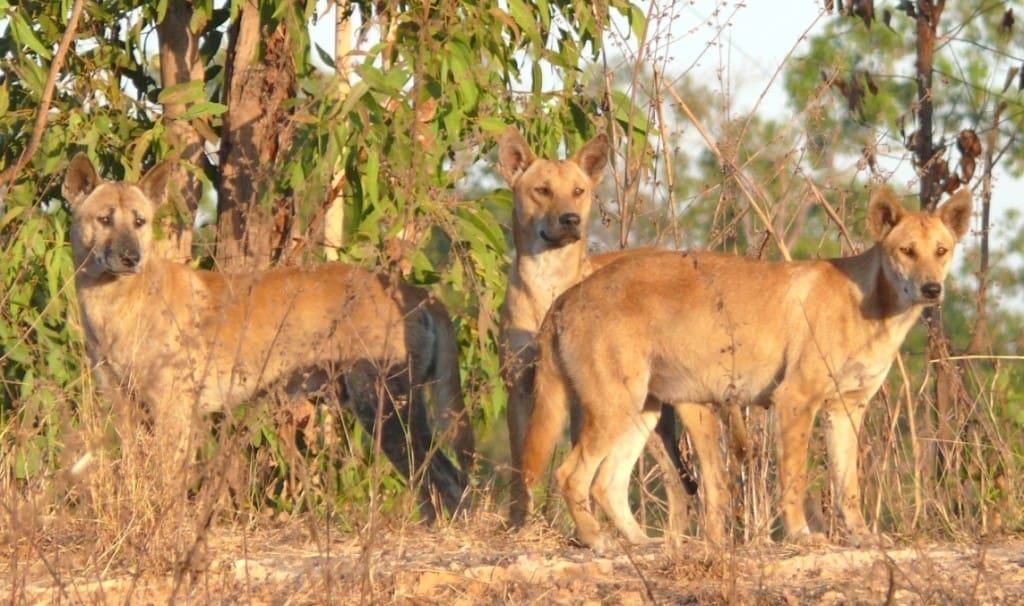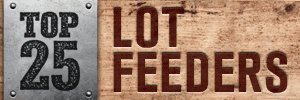
WOOL brokers have cited the demise of the Queensland wool industry in a submission of support for growers fighting a draft proposal to reintroduce dingoes in parts of south-west Victoria.
The Greater Gariwerd Landscape Draft Management Plan includes a proposal to investigate the re-introduction of dingoes or dingo-hybrids in the Grampians National Park or Gariwerd region.
The draft plan has been prepared by Parks Victoria, Barengi Gadjin Land Council, Eastern Maar Aboriginal Corporation, and the Gunditj Mirring Traditional Owners Aboriginal Corporation. Community feedback to the plan ended on 24 January.
Under the goal of reducing predation by foxes and cats, the plan proposes the establishment of innovative research partnerships between farmers and academic institutions to investigate and trial native predator re-introduction (quoll and Dingo) to restore missing ecological processes, control pest species (rabbits, fox, feral cat) and naturally manage overabundant macropods (kangaroo and wallaby).
Wool brokers oppose dingo re-introduction
National Council of Wool Selling Brokers executive director Chris Wilcox said council members support the aims and objectives of the draft plan, but oppose the re-introduction of dingo into the Greater Gariwerd Landscape.
“Doing so will have a significant and potentially devastating cost and impact on the wool and sheep producers in the region.
“It will not be possible for Parks Victoria to confine released dingo within the parks area,” he said.
“This will result in dingo attacks on sheep and lambs on properties adjoining the Gariwerd Landscape and parks.”
Mr Wilcox said dingo and wild dog attacks have happened with devastating effect in the sheep and wool producing regions in Queensland.
“Twenty years ago Queensland was the third largest wool producing state in Australia.
“Due to the devastating impact of dingo and wild dog attacks on sheep and lambs, Queensland’s production is now a fraction of its historical levels and it is the smallest wool producing state in Australia,” he said.
Mr Wilcox said wool and sheep producers in Queensland have spent millions of dollars in the past five years building dingo/wild dog proof fences to be able to rebuild sheep flocks.
“The Queensland Government has supported this spending with millions of dollars of grant support to the producers.”
Gariwerd area produces 30pc of Victoria’s wool
Mr Wilcox said dingo and wild dog attacks are also a serious problem through eastern Victoria, parts of New South Wales and South Australia.
“The region around the Greater Gariwerd Landscape is a very large wool-producing region.
“It produces around 30 percent of Victoria’s wool each year (23.1 million kilograms in 2019/20).” He said.
“The re-introduction of dingo into the Greater Gariwerd Landscape would, over time, cause significant economic loss to producers, to the Victorian and Australian sheep and wool industry and to the Victorian economy.
“It would also cause untold animal welfare damage with the maiming and painful death of sheep and lambs,” he said.
“We urge Parks Victoria to rethink its proposal to reintroduce dingo into the Greater Gariwerd Landscape.”
The draft management plan document recognises that “the re-establishment of dingo or dingo-hybrid populations in the Greater Gariwerd Landscape has the potential to cause community concerns due to possible conflicts with grazing.” Programs for the re-introduction of dingoes have also been raised by other traditional owner groups in other parts of Victoria and are being investigated, the plan says.
The dingo is an important cultural and environmental species
A spokesperson from Eastern Maar Aboriginal Corporation Eastern Maar said the body is supportive of investigating the reintroduction of dingos as an important cultural and environmental species as part of future management of the Gariwerd/Grampians National Park.
“It is envisaged that such an investigation would be inclusive of all stakeholders.
“At this time, Eastern Maar is supportive of the conversation being had, and hearing the arguments both for and against the proposal.”
The spokesperson said Gariwerd is a significant bio-cultural landscape that encompasses both tangible and intangible values for traditional owners.
“Eastern Maar encourages conversation about the landscape and how best to manage it – now and into the future.”
The spokesperson said the Greater Gariwerd Landscape Draft Management Plan is yet to be finalised.
“The plan has been subjected to an extensive and extended community consultation process.
“At this time, no decision has been made relative to the re-introduction of dingoes,” the spokesperson said.
“Any decision would be based upon further engagement, comprehensive research and broad community consensus.”
Amendments will be made to the draft plan in response to stakeholder engagement and the final landscape management plan will go to the Minister for Energy, Environment and Climate Change this year.
Click here to read The Greater Gariwerd Landscape Draft Management Plan.



Apparently the difference between a nuisance ‘feral’ and a native species is really only a matter of time. The so-called Australian dingo has very likely only been here somewhere between 4000-8000 years, according to research undertaken by the Australian National University And The University of WA. They were brought here by humans and used much the same way human societies have used dogs for thousands of years. They have over these years — short in terms of our planet’s life — been responsible for who knows how many extinctions, notable among them, the mainland ‘Tasmanian Tiger’.
It seems hard to understand why the Victorian Government would be trying to offer dingoes this foot up. A case of short-sighted folly. Small native mammals will suffer immeasurably. The dingo has no predator, it will devastate the current eco-system, one it was never really a part of.
The dingo will cause harm to the wool and sheep industry, dogs will go for easy prey and lambs offer that. As some 30 percent of Victoria’s wool clip comes out of this region, it’s commercial suicide as well as an environmental disaster in the making.
What if these killers stray off the national park? Not only sheep, but all farm animals are in danger, including their human owners.
Yes, dingoes would keep other undesirable species numbers down, but they do not discriminate on what they kill, sometimes for the sake of killing. The most stupid idea I’ve heard.
It’s a pity that wool growers fail to base their arguments on science. For those (Allen & West 2013) that claim an increase in dingo/wild dog predation is contributing substantially to the contraction of the sheep industry arguing that rangeland production of wool and sheep meat will disappear within 40 years; Forsyth et al (2014) counter argue that the importance of dingoes as a cause of the decline in Australia’s sheep flock has been overstated. There has been a similar rate of decline of sheep production in New Zealand, Argentina and the USA attributed to decline in wool price, due to competition from other textiles and increasing cost of production. Sheep have been replaced with grain crops and cattle which provide greater financial return for input. Sheep husbandry is expensive in terms of time and labour, compared to alternatives.
Do you believe dingoes and sheep can peacefully co-exist? Perhaps they plan to release the newly-found mutant Dingo-Dan — a woke grass-eating vegan-type dog?
Simply talk to the cattle industry in the Northern Territory and find out the damage of wild dogs to that industry before you even suggest that cattle are exempt from the menu of wild dogs.
To seriously think a dingo will control other pests needs more logic please. The next cane toad with fur.
Look at East Africa and some imbalance in this area.
Please for the sake of all stake holders not just sheep…open your eyes to some reality.
And would you really trust a dingo with a quoll..dingo dinner…quoll nil. Oh what big eyes you have says the quoll.
Seriously, you need to read some up to date studies. And not listen to ignorant farmers that refuse to change their ways. I highly recommend Kylie Cairns’ work and Euan Ritchie. Have a talk to the cattle farmers up north who are benefiting from having dingoes around them, mate.
The Victorian Government is repeatedly responsible for a lethal virus escaping into the community, with huge consequences and inflicting economic devastation.
Is it true that they are now considering releasing a lethal sheep predator, the dingo, into national parks?
How do we control the real threats?
The virus and the woke nutters that the Left listen to?
How do we educate Chairman Dan?
Why is the opposition so ineffectual?
Time for a new political party?
Really we shouldn’t even be debating this question. The whole idea is basically ludicrous. There are a host of more important land use issues that need both debate and action.
To be cynical, you could say this is a pathetic attempt by Parks Victoria to “wind up” livestock producers in south western Victoria to take their attention away from the gross mismanagement of our land under PV’s care.
Matters that are worthy of debate are issues like us withdrawing from the management of National Parks completely and handing over weed and vermin control, fuel reduction and heritage protection to the indigenous community with strict targets related to approved Government budgets.
“to control feral cats..” is a totally absurd reason.
I don’t know any canine that has a climbing ability within a bull’s roar or anywhere approaching that of felines.
And to suggest introducing hybrid dingoes is equally divorced from any semblance of commonsense.
They actually suppress the hunting abilities of fral cats, but who listens/reads scientific studies these days?
Hybrid dingoes have also been proven to do the exact same predatory job as pure dingoes. Maybe read some research that isn’t paid for by farmers and isn’t biased against Australia’s native predator?
Dingoes are native, they are protected under law, but like kangaroos — which become a problem caused by ‘wild dog’ baiting and trapping — it’s all about the $.
The government has a vested interest in farmers because they make $ off it, just like they do with culling roos for pet food and leather, to be sold internationally and soon for human consumption.
Spot on.